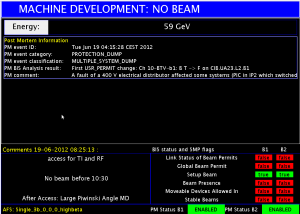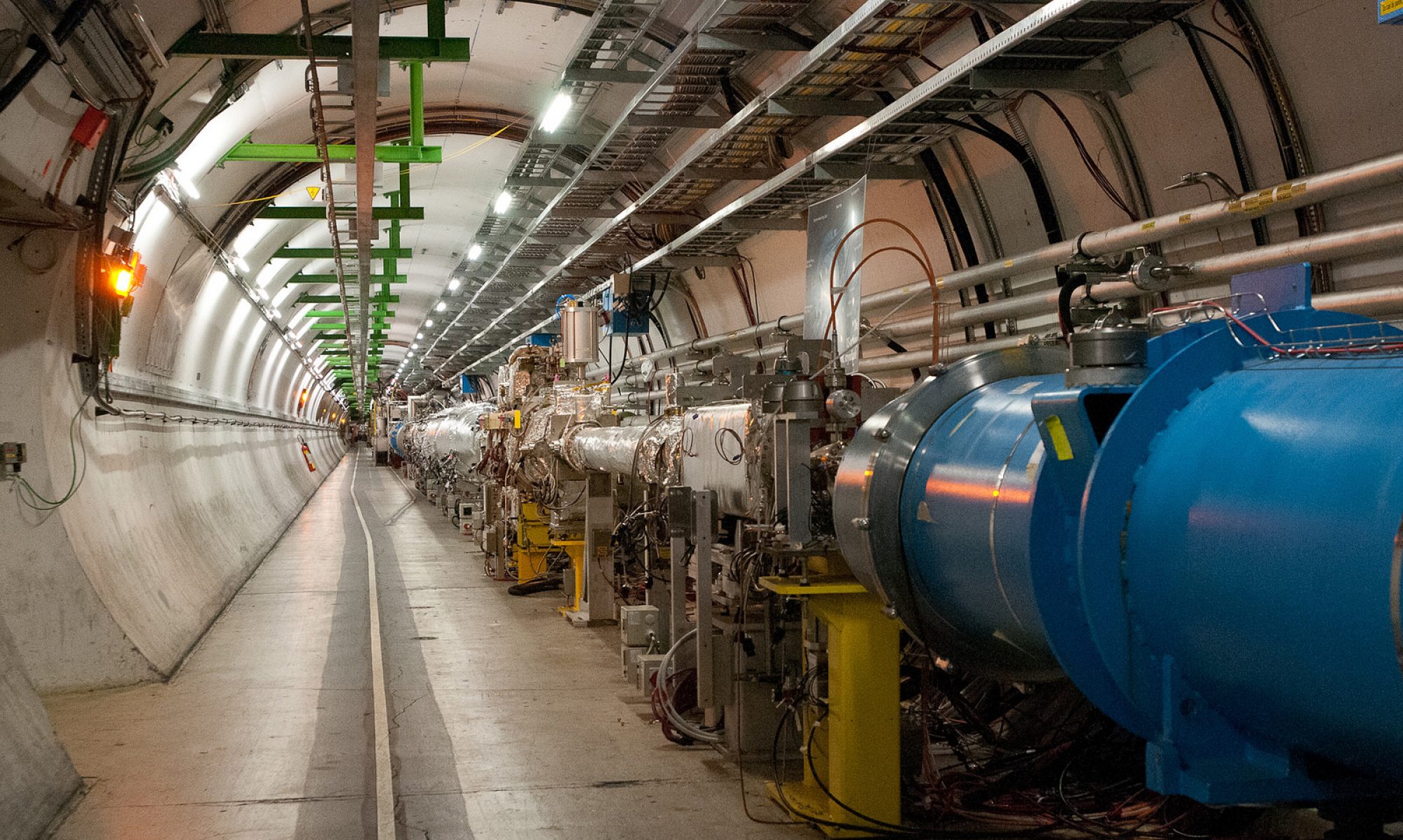
Today’s shift menu includes: Machine Development (MD)! This may sound exciting – no doubt, it is very exciting for the LHC machine physicists. For the shift crew of the ATLAS Experiment, it’s rather dull. There is no data to be taken; in fact, the ATLAS detector is operating in STANDBY mode.
A message popped up recently on the LHC Op Vistars page (the public-facing status page for the machine). It read: “After access: large Piwinski Angle MD.” I thought I might take a little time to revisit the Piwinski Angle, since I only learned about it a few years ago.
A decent paper to help us step into the subject is http://arxiv.org/abs/1201.5905. There, they list in Equation 2 the relationship between the instantaneous luminosity produced by two LHC-like proton beams in collision and the parameters of those beams; the beams are assumed to be round (in the plane, denoted “x-y”, transverse to their direction of travel, denoted “z”), Gaussian beams (this being their profile in a plan transverse to the x-y plane; x-z, for instance) with equal intensity. The beams may cross at a non-zero angle – the “crossing angle” – and in fact there are advantages to doing this. By increasing the crossing-angle, it is possible to increase the instantaneous luminosity.
There are, of course, limitations to increasing the crossing angle. One has to not only bring the beams into collision, but then bring them out of collision, transport them back into the accelerator, and re-focus them afterward. You have to trade off larger crossing angles with the physical limitations imposed by these constraints.
The Piwinski angle is a specific combination of the crossing angle and the bunch profile quantities – the cross-section of the beam in the plane transverse to the z-direction and along the z-direction. By increasing the profile along z, one can increase the chance of collisions by making the bunches pass through each other for a longer period of time. However, the bunches cannot be too long, or they will destabilize in the accelerator (bunch size is limited by, among other things, the structure of the radio-frequency waves inside the accelerator). One can “squeeze” the bunches in the x-y plane, compressing them and thus increasing the chance that protons will interact. The Piwinski Angle, given by θC σz/(2σzy), can be increased (in order to increase luminosity) by doing any of these changes, alone or in combination. Changing these properties of the beams can confer a benefit to intensity, but clearly need study as they also risk introducing instability. That trade-off between stability and intensity is a constant battle for any accelerator.
So today, the LHC will attempt to explore the scheme outlined in the paper I linked earlier. In order to achieve the long-term luminosity goals of the machine, they will explore the Large Piwinski Angle scenario.


Hi, just stumbled across this. Your description of the relationship between the Piwinski angle and lumi is actually somewhat backward as you’ve neglected to mention one constraint – increasing Piwinski angle can allow increased lumi while keeping beam-beam tune shift constant.
Increased P-angle actually decreases lumi, all other things being equal. A longer bunch at a greater crossing angle means less of each bunch collides with the other. Consider the extreme example of a spherical bunch – in this case, bunch overlap is 100% regardless of crossing angle. The longer the bunch, the more the crossing angle affects overlap.
The article you link to is, in a roundabout way, actually talking about how P-angle reduces beam-beam tuneshift. Thus, for a given desired maximum tuneshift, you can increase P-angle, and (over)compensate the lumi loss by increasing bunch charge.